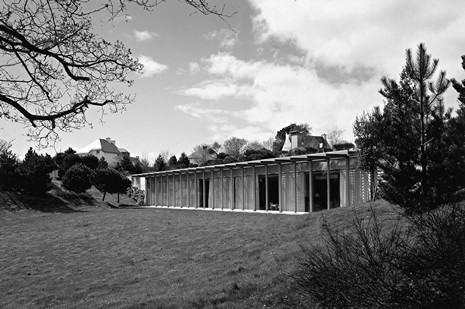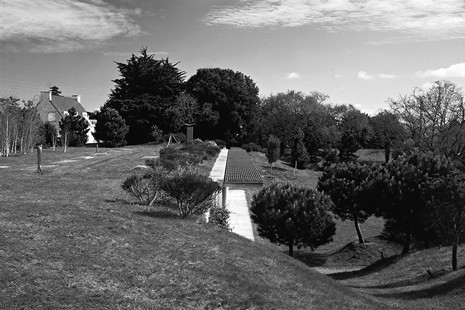Description
Dominique Perrault’s ‘Villa One’ is a home with the character of a paradigm. Perrault’s ability to analyse a situation and subsequently implement an idea that is complete in itself is confirmed not just by the special topographical solution but also by the concept behind its ground plan. Sloping terrain on a generous site provides the starting-point for a building that celebrates topography. The concept is to make nature, rather than architecture, the dominant feature, and this leads to a building that dramatizes the height difference in the terrain via an artificial edge.
But Perrault is in no way imitating natural form. Quite the contrary, this piece of architecture with its concrete, steel and glass asserts itself as an object that is anti-nature; it is precisely convincing because of this. It is only through this stark contrast that nature retains its own identity, making it possible for the two elements to live and work together successfully. The fact that the building burrows deep into the ground does not cause any problems with lighting: both the glazing rising through the full height of the building in the main façade and skylights in the planted roof provide light for the rear zones.
The interior lighting creates an unusual play of spatial links: In the rear half, Perrault places a completely closed run of ancillary rooms for sleeping, cooking and washing, within the support structure. A number of doors can be opened to control the incident light if natural front or top lighting is called for. In this way the dividing wall is changed into a door membrane and thus becomes an element that imbues the space with character. On the other hand, the entire front half, facing the countryside, suggests an ‘interaction space’. No parcelled separation, but large-scale interaction reaching out into the external space is the key theme for living in this house.
Drawings
Site plan
Diagram with position of the living area within the overall area
Ground floor of the sunken building with ancillary room tract in the rear of a large scale `interaction zone`
Cross section of the building as terrain break
Photos

Exterior view of the full glass façade

Exterior view from above, building and topography become one
Originally published in: Klaus-Peter Gast, Living Plans: New Concepts for Advanced Housing, Birkhäuser, 2005.